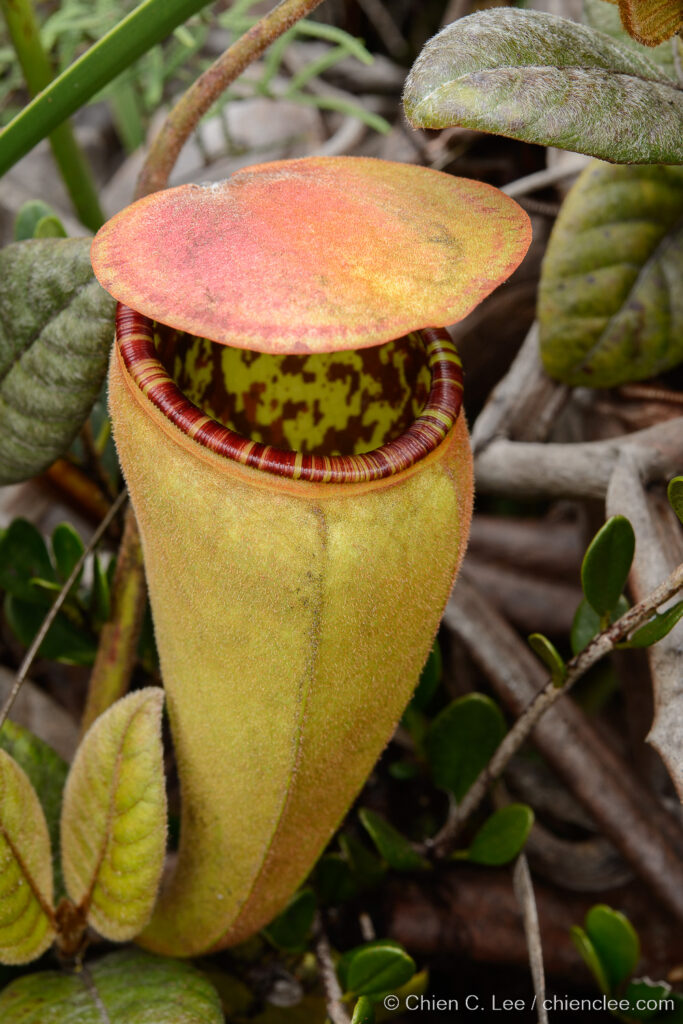It wouldn’t be far-fetched to say that we are presently experiencing a Golden Age of pitcher plant discovery. Scarcely 16 years ago there were 84 officially recognized species in the genus Nepenthes; now that total is fast approaching 150, with nearly 30 new taxa described in the past 5 years alone. Whilst most of these new taxa are only slight variations of previously described species or are ‘splits’ where a single taxon has been divided based on what are deemed significant differences, a few are unique and represent striking new forms (e.g. N. attenboroughii and N. undulatifolia).
Last month, whilst trekking through the mountains of Papua (Indonesian New Guinea) with longtime friend and colleague Dr. Charles Clarke, we were excited to encounter yet another undescribed species of Nepenthes on a remote forested ridge. Our 2-week expedition had been fraught with numerous setbacks, including illness and inter-tribal warfare which nearly thwarted our entire climb and ultimately prevented us from reaching the summit we had originally targeted. Nevertheless, we were able to explore some incredibly beautiful and pristine montane habitats and in a fortunate turn of luck, stumble across this new and distinctive species.
Because of this plant’s unique features, it’s taxonomic affinities with other Nepenthes, both within and outside of New Guinea, are not yet evident. The globose lower pitchers (below left) with their broad and strongly-toothed peristome, and the funnel-shaped upper pitchers (below right) bear little resemblance to other Papuan taxa. Additional unusual traits include the leaves, which are broad and sub-petiolate, and the dense coating of brownish hairs which cover all parts of the plant, giving it a “wooly” appearance. Unfortunately, as our expedition was purely a photographic one we did not collect herbarium specimens, and a formal description of this species will have to wait for a future survey equipped with collecting permits.


This discovery is further remarkable considering the relative paucity of Nepenthes in New Guinea. Despite the island’s vast size, the presently recognized diversity of the genus on the New Guinea mainland is quite small (only 11 species). Unlike other islands of the Indonesian archipelago such as Borneo (39 species) and Sumatra (37 species), where pitcher plants occur in abundance on most mountains exceeding 2000 m, Nepenthes are patchily distributed in New Guinea and are seemingly absent from large regions of highland areas. In 2004 and 2006 I climbed two separate mountains each exceeding 3000 m in elevation and, whilst the habitats were very rich in a variety of typically associated plants, I did not observe a single Nepenthes.
Notwithstanding the large number of new Nepenthes which have been distinguished in recent years, the addition of this interesting species shows that we still have a long way to go towards our complete understanding of the genus, with perhaps other great discoveries to be made in the mountains of Papua.
References:
Jebb, M. & M. Cheek (1997) A Skeletal Revision of Nepenthes (Nepenthaceae). Blumea 42: 1-106.
Jebb, M.H.P. 1991. An account of Nepenthes in New Guinea. Science in New Guinea 17(1): 7–54.

Leave a Reply